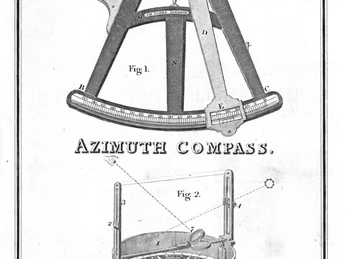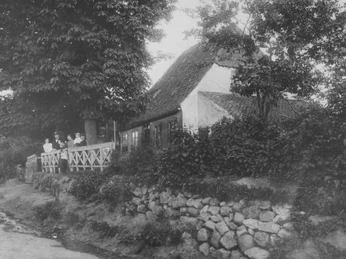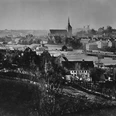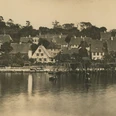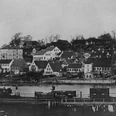St. Jürgen
A walk along the low houses leaning against the slope in St.-Jürgen-Straße gives the wanderer a slight impression of how the captains, steersmen, shipbuilders and fishermen, who once resided here in large numbers, lived with their families in past centuries. Development began in the 16th century, with the houses being built individually on fieldstone bases on the slope. At first, only the upper side of the slope was built on. The location offered the skippers an unobstructed view of what was happening in the harbour. And families who stayed behind, could spot the eagerly awaited sailors arriving at the harbour early on. Numerous crossways lead directly from St.-Jürgen-Straße down to the harbour embankment. Even today, there is a close connection between the two areas of life.
For a young man, the progression from being shipboy ("Moses") to becoming a captain was a tough climb, associated with many challenges. Seafaring way of life began early and made a huge difference for the youngster. Usually, at the age of about eleven, shipboys would assume their chores and go on board for their first voyage in order to contribute to the family's upkeep. In autumn, they would return home to attend school in the winter months. At the age of about seventeen, some of them were promoted to the rank of a sailor, and would be trained in navigation during the following years of sailing, hopefully passing their mate's examination between 21 and 23. They received their practical training as helmsmen's assistants on the crossings, while the theoretical tuition was taught in one of the numerous private navigation schools in the area. “Experienced” skippers mostly ran these. The skilful use of rulers, course triangles, sextants, and tabular computation often decided the fate of ship and crew. Flensburg's navigation schools enjoyed a good reputation. In 1864, the local navigation teacher, Jan Hinrich Cannich, was even appointed first navigation examiner for the entire Duchy of Schleswig. After a few more years, the most able among the helmsmen finally succeeded in rising to the rank of captain, responsible for ship, crew, and cargo.
In 1781, there were about 50 steersmen living in St. Jürgen alone. Aptly, one of the corridors leading down to the harbour in St. Jürgen today bears the name Steuermannsgang (Steersmen's Corridor).
Good to know
Openings
Nearby

